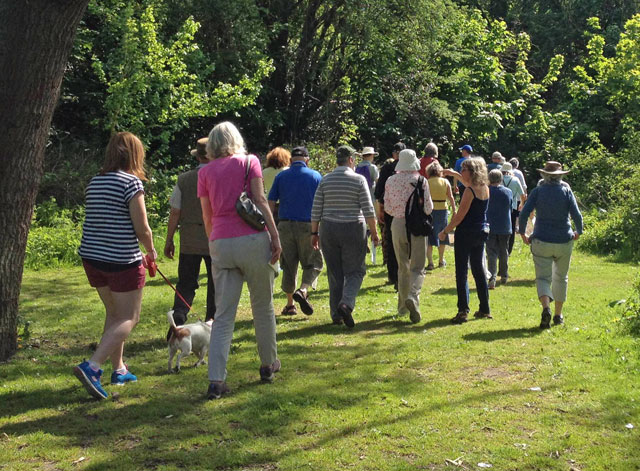
The walk on the 8th May was very successful with 30 people joining on what was a sunny warm afternoon. Local historian Peter Burley led the walk, with an impressive depth of knowledge about the area.
Continue reading “Bernards Heath Guided Walk”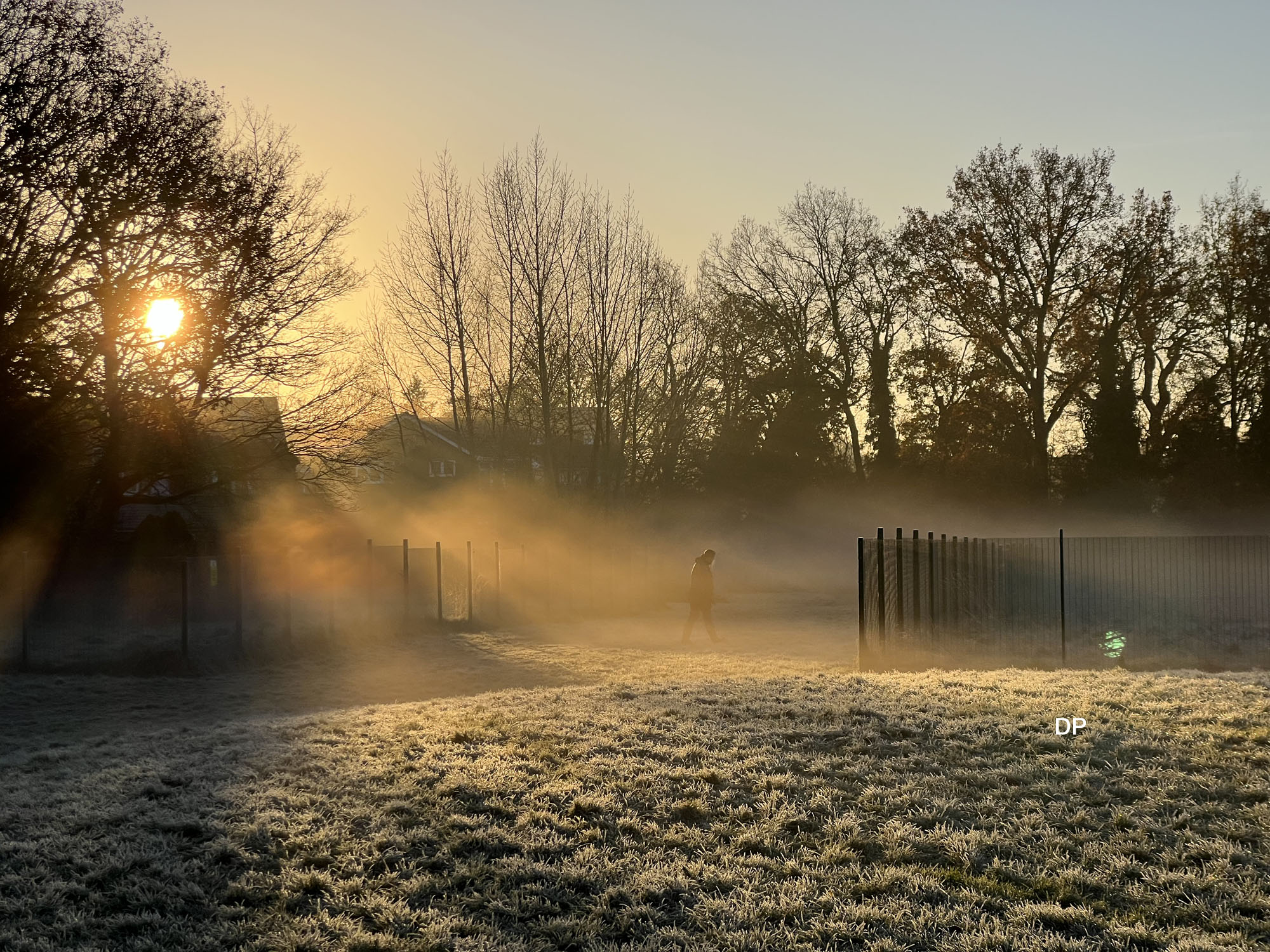
including Beech Bottom Dyke and Sandridge Road Wastes

The walk on the 8th May was very successful with 30 people joining on what was a sunny warm afternoon. Local historian Peter Burley led the walk, with an impressive depth of knowledge about the area.
Continue reading “Bernards Heath Guided Walk”







Click on the left-hand image and move through the sequence using the arrow or right-arrow key

The horse chestnut, which might be thought native to the British Isles as it is so widespread,in fact hails from the Balkans and Greece and has been introduced here.
Oliver Rackham, the renowned authority on trees in the British landscape, referred to the horse chestnut as the ‘bus station tree’ as it seemed to be the species of choice for that location.
The horse chestnut (and a false acacia) in front of Chime Square above, along with some walls, are all that remain now of the St Albans bus garage which was on the site.

A four-year survey is under way to compile a new atlas of Hertfordshire’s mammals, amphibians and reptiles. Friends of Bernards Heath and other residents with an interest in wildlife can make a welcome contribution to the project by submitting their sightings.
Update: 21 May 2016.
David Uttig, who leads the survey on the Heath, reports that nothing of interest has been found under the mats yet. They are located at 51 45 43N 0 19 59W and 51 45 46N 0 20 9W. You can find out where these are by entering the co-ordinates into a Google maps search.
Update 4 June 2016
Two more mats have now been added in Beech Bottom Dyke at 51.46.6N 0.19.41W and 51.46.11N 0.19.35Wz
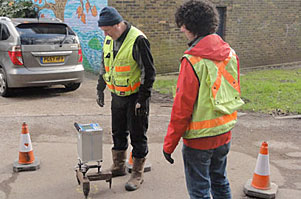
Peter Bone, Senior Surveyor for Public Sector Services, writes ‘Please note that the County Council has arranged for some further survey works to be carried out to check the ground conditions at the Ariston Works site.
Continue reading “Ariston Site – Further Survey Works”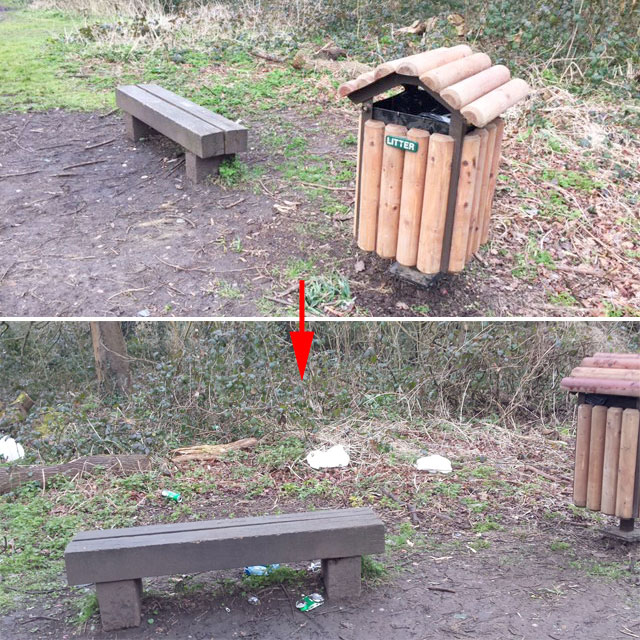
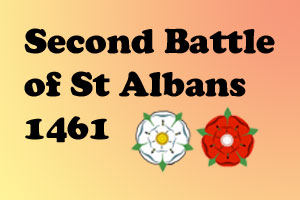
Peter Burley, a local historian and member of the Friends of Bernards Heath Committee, gave an illustrated talk focusing on what happened and what you would have seen on the school site over the centuries.

Peter writes:
We start with Julius Caesar who would have marched his army past the school in 54BC on his way to attack Wheathamstead. Shakespeare’s King Cymberlaine was king round here before the Romans returned and he built Beech Bottom Dyke. We look at how the land reverted to wild wood after the Romans and was then cleared by burning the trees to make land for pasture and creating the heath. This gives the area and the school its name – “Bernards Heath”. The name means land cleared by burning and is the same derivation as “Barnet” or “Brent”. The first map of the area calls it “Barnet Heath”, and, rather alarmingly, shows the town gallows standing opposite the school.
We look at how the Manor of Sandridge – and hence the school site – passed from control by the Abbey to control by the Spencer family (whose name is commemorated in the school) – via the Duke and Duchess of Marlborough, who rescued the commons along Harpenden Road from being enclosed. The local economy was based on brick making into the 19th century and we look at where there are some surviving brick pits opposite the school. The pits that filled up with water and where kids from the school actually drowned have long since been filled in.
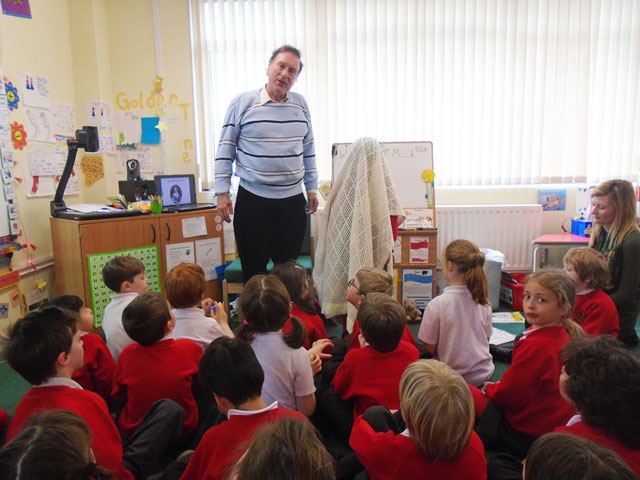
We finish the history with the area being built up and the school founded in the 1890s, but not before re-enacting the story of the most romantic character to have been associated with the area. A volunteer girl from the class is draped in a white cellular blanket to illustrate the story of the “Lady in White”. She was Frances Jennings, Countess Tyrconnel, who lived 1647-1730. She was born at Waterend House but then grew up in London, where, as a child, she ran away from home to sell oranges in Covent Garden. She and her two sisters inherited a bankrupted estate which included the Manor of Sandridge. Her older sister (Sarah) married the future Duke of Marlborough and restored the family’s fortunes. Frances married Richard Talbot, a Roman Catholic, who was created Earl Tyrconnel* by James II and then led the Irish in opposition to William III’s invasion in 1689. He died of a stroke before his brother-in-law could complete the conquest of Ireland and Frances fled into exile at the Court of Versailles. After being initially feted by Louis XIV, she fell on hard times as France went bankrupt and she was reduced to living as a beggar in Paris. There she used lace-making as a prop for her begging and sat on the pavement weaving lace while dressed head to foot in white lace so no one could see her face. She also became deranged. At a later date she returned to London under an amnesty for Catholic exiles and continued her lace-making and begging in Covent Garden. There she became a tourist attraction in her own right and was known as the (anonymous) “Lady in White”, but she never returned to Sandridge.
*as a footnote, he features in the nowadays little-sung words to the song “Lilly Bolero”, where he is portrayed as an ogre who eats Protestant babies.

Girls to the rescue! A Tesco trolley was just one of the many items recovered or litter collected on our Action Day.
Just look at all this rubbish in the pictures below – there was so much unsightly litter around the Heath, including Beech Bottom Dyke (close to Beech Road), but we had a really nice sunny day to get to work on it.
Move through the photos by clicking right or left keys on your keyboard or on the pictures with mouse/trackpad.
There is much more to be done on the muddy paths, but it’s hard work by hand. See where FoBH has funded improvement work.
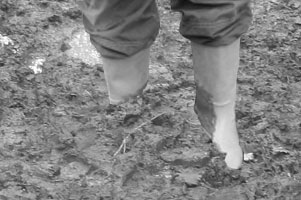
Mud glorious mud – if you’ve walked the paths on the Heath recently you’ll be well aware of this kind of sight where paths become a glutinous, slippery mess.
Having recently organised and part funded a new path extension to the Ancient Briton, FoBH has now brought in the same contractor to improve access to the west of Harpenden Road. The aerial view below shows where work has been done, especially between Edmund Beaufort Drive and Spinney Lane. Hopefully, this will make the latter an all-weather path, rather than the mire it was recently. The full extent of paths in this area is not shown.
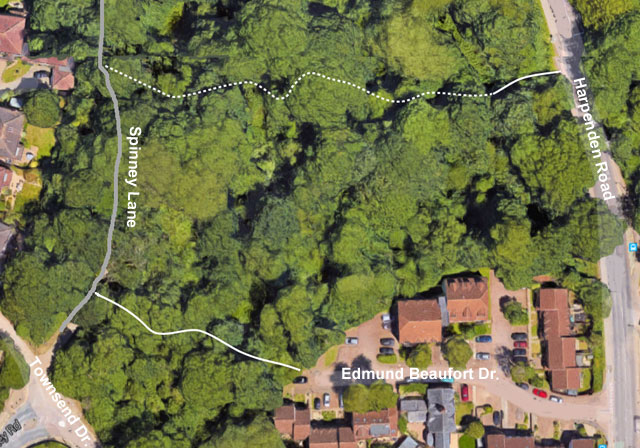
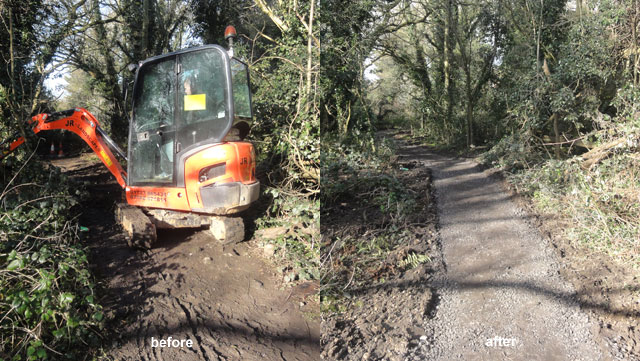
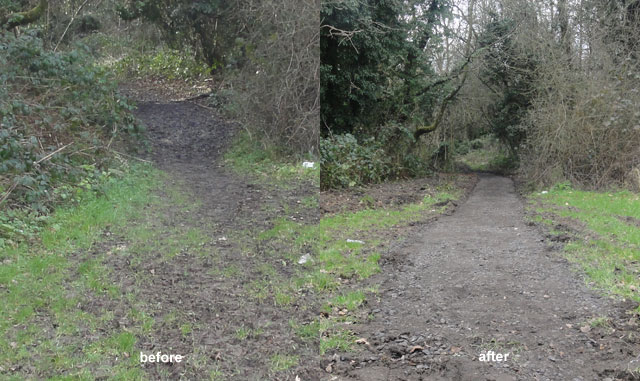
On this occasion budget restrictions have not allowed St Albans District Council to support us financially even though it was agreed that the need to improve this well used amenity was very great. Therefore, following a resolution at our recent AGM, FoBH has met 100% of the cost from members’ subscriptions.
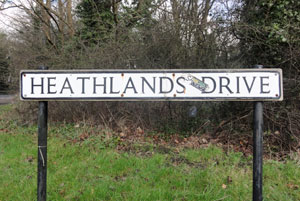
If you have walked along Heathlands Drive recently, you will probably have noticed clearance work near the Judo Club building. Following on from work on the Lower Field, ground checks are being made on this area and the possibilility of having to divert the road.
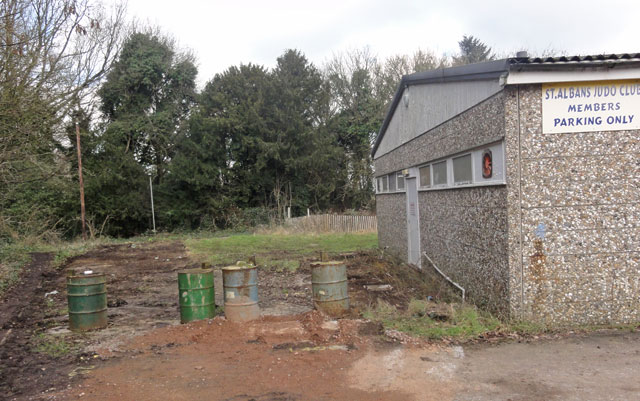
Chris Parkes FRICS, director of Lambert Smith Hampton, informs us that:
‘Survey work is required to check out some gravitational anomalies that have been found in the vicinity of the entrance to Heathlands School.
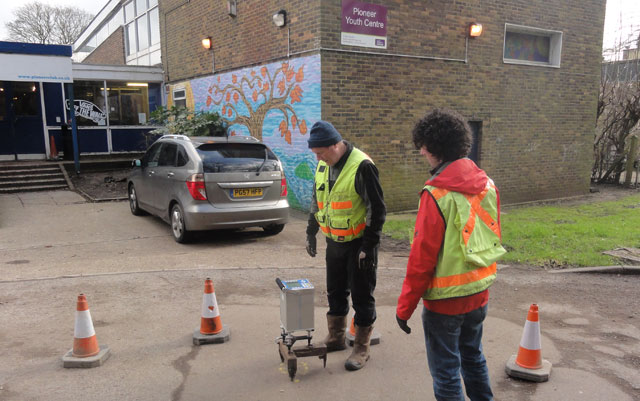
There are 2 elements to the work:
1. Thursday 11 February and Monday 15 February- clearance and microgravity survey of an alternative route to the school behind the Judo Club (to allow for the unlikely event that the other survey work causes concern over ground stability of the existing access road). The clearance work is being carried out with a JCB, so there will be some noise.
2. Tuesday 16 and Wednesday 17 February drilling in the access road outside the school gates to check on subsoil conditions. Depending on what that reveals, further intrusive survey works may be required.
The current intention is that the access road will be narrowed whilst the works are carried out, but will ‘remain in use’.
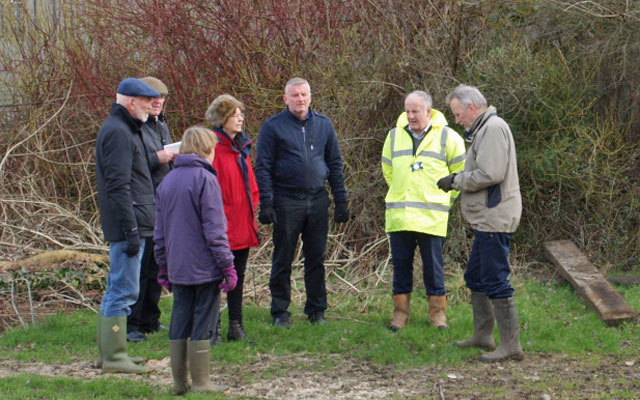
Friends of Bernards Heath met with representatives of St Albans District Council and councillors Roma Mills and Richard Curthoys to review the current condition of the Lower Field. The new road across the field from the old fire station works well, but many objects have been left, seemingly at random, which make the area look untidy and in some areas, dangerous. It is hoped that contractors will be able to tidy up in the near future.
Continue reading “Objects left on the Lower Field”